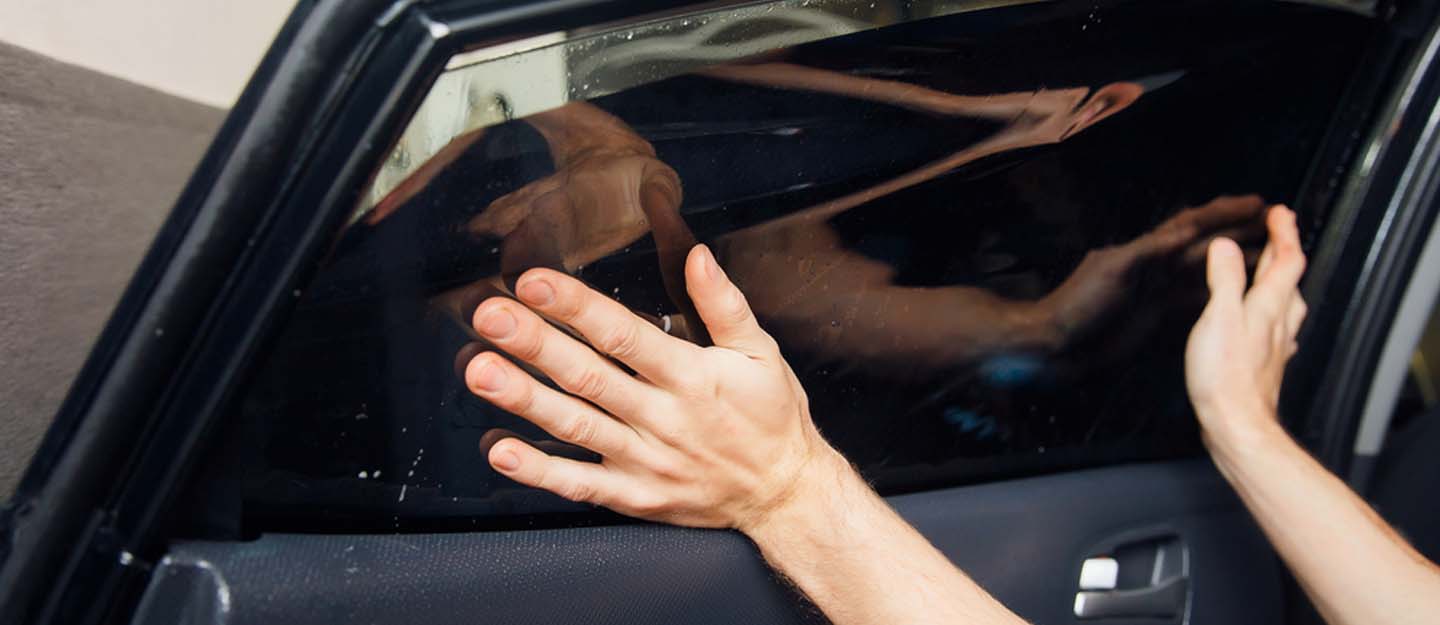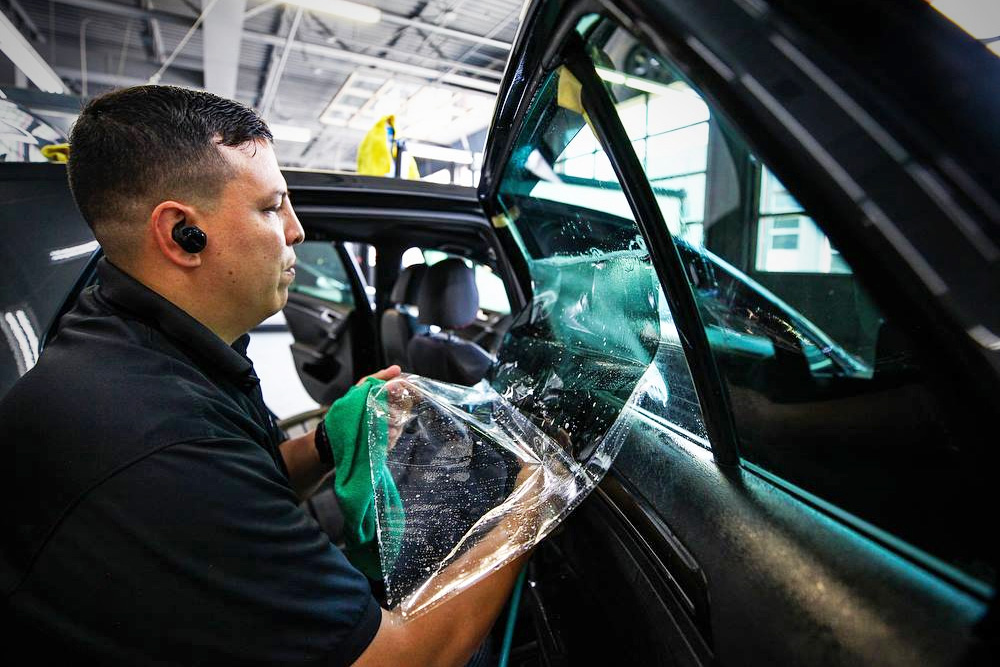Checking Out the Different Sorts Of Window Tint for Cars and Their Benefits

Colored Window Tint
Colored home window tint is a preferred selection among automobile proprietors seeking to boost privacy and minimize glow while keeping a stylish look. This kind of tint is created by incorporating color right into the adhesive layer, which is then used to the windows of the automobile. The primary appeal of colored window color depends on its ability to give a visually pleasing appearance without compromising performance.
Among one of the most significant advantages of colored window tint is its capability to obstruct hazardous UV rays, helping to secure both passengers and the lorry's interior from sunlight damages. In addition, this tint effectively minimizes glare, contributing to a more comfortable driving experience, particularly throughout intense daylight problems. The strengthening of window shade also adds a layer of personal privacy, making it more difficult for outsiders to see inside the car.
However, it is vital to keep in mind that while dyed home window tint uses many advantages, it might not provide as much warm denial as other kinds of tints. Its durability can be influenced by direct exposure to prolonged sunshine, potentially leading to fading over time. Overall, dyed home window color continues to be a popular option for those focusing on visual appeals and basic sun defense.
Metalized Home Window Color
Metalized home window tint stands for a sophisticated option for car owners looking to improve both efficiency and appearances. This type of color integrates little metallic bits that mirror sunlight, using a variety of advantages that interest several automobile proprietors. One of the main benefits of metalized home window color is its exceptional heat denial capacities, which can substantially decrease the indoor temperature level of a cars and truck. This not just enhances comfort for passengers however also reduces the tons on the lorry's a/c system, possibly enhancing fuel efficiency.
Moreover, metalized colors offer increased resilience contrasted to colored films, making them immune to fading and scratching. This durability ensures that the tint keeps its effectiveness and look with time, providing long-lasting worth.
Furthermore, metalized window tint can boost personal privacy and security by making it much more difficult for outsiders to see inside the lorry. The reflective quality of the tint can also discourage prospective burglary, as prized possessions are much less noticeable (window tinting). While it may conflict with some electronic signals, such as general practitioner or cellular phone function, the overall advantages make metalized home window tint a compelling selection for several auto owners
Ceramic Window Color
Providing sophisticated technology and exceptional performance, ceramic window tint has arised as a top selection for critical cars and truck owners. This innovative film is composed of sophisticated ceramic fragments that give significant warm being rejected while maintaining clarity and visibility. Unlike conventional tints, ceramic window tint does not count on steel or dye, which can interfere with electronic signals from tools such as general practitioner and mobile phone.
One of the standout benefits of ceramic window color is its outstanding UV security. It obstructs as much as 99% of hazardous ultraviolet rays, consequently protecting both the automobile's inside and its passengers from sunlight damages. In addition, this type of tint boosts privacy without compromising exposure, making it a useful alternative for day-to-day vehicle drivers and deluxe vehicles alike.
Ceramic window color likewise boasts sturdiness; it is resistant to fading and scraping, making sure resilient performance. Its non-reflective nature indicates it does not cause glow, contributing to more secure motoring conditions (window tinting). For those seeking a premium tint option that combines looks with performance, ceramic window color stands out as an exceptional option, delivering see post enhanced convenience and protection on the road
Carbon Window Tint
When it involves home window tinting choices, carbon window color has gotten popularity for its blend of performance and price. This sort of tint is composed of carbon fragments, which supply an unique matte coating that enhances the visual charm of lorries. Among the key benefits of carbon home window tint is its capacity to obstruct a substantial amount of hazardous UV rays, shielding both the lorry's inside and its passengers from skin damages and fading.
Furthermore, carbon window color uses outstanding warm being rejected buildings, reducing the demand for extreme a/c and boosting fuel efficiency. Unlike dyed tints, carbon colors do not discolor in time, keeping their effectiveness and appearance for years. This longevity makes them a sensible option for auto proprietors seeking long-term value.
Moreover, carbon window color is non-metalized, which suggests it does not conflict with electronic signals, making it ideal for automobiles equipped with GPS, Bluetooth, and other cordless innovations. The balance of expense, efficiency, and aesthetic appeal has developed carbon window tint as a recommended choice for many lorry proprietors. Eventually, it acts as a trusted solution for those seeking to enhance comfort while making certain style.
Factory Tint
Manufacturing facility color, likewise understood as OEM tint, describes the tinting that is used to car windows throughout the manufacturing process. This kind of color is normally integrated into the glass itself, using a consistent look and regular degrees of shielding across all home windows. The primary purpose of manufacturing facility color is to minimize glow and boost guest convenience while giving a level of UV protection.

While manufacturing facility tint uses fundamental advantages, it may not give the very same degree of warmth rejection or personal privacy as higher-grade aftermarket tints. Vehicle proprietors looking for enhanced performance might take into consideration added tinting alternatives, while still appreciating the aesthetic allure and capability manufacturing facility tint supplies.
Verdict

However, it is crucial to keep in mind that while dyed home window color uses many advantages, it might not provide as much heat rejection as various other types of tints. For those looking for a premium color option that integrates aesthetic appeals with functionality, ceramic window tint stands out as an exceptional option, delivering boosted comfort and protection on the roadway.
When it comes to window tinting options, carbon window color has actually gained appeal for its mix of efficiency and affordability.Factory tint, likewise known as OEM color, refers to the tinting that is used to vehicle windows during the manufacturing process. The precise degree of color can vary depending on the car maker and model, with some cars including a lot more substantial tint on rear home windows than on front home windows.
 Anna Chlumsky Then & Now!
Anna Chlumsky Then & Now! Michael Oliver Then & Now!
Michael Oliver Then & Now! Michael Jordan Then & Now!
Michael Jordan Then & Now! Kelly Le Brock Then & Now!
Kelly Le Brock Then & Now! Bill Murray Then & Now!
Bill Murray Then & Now!